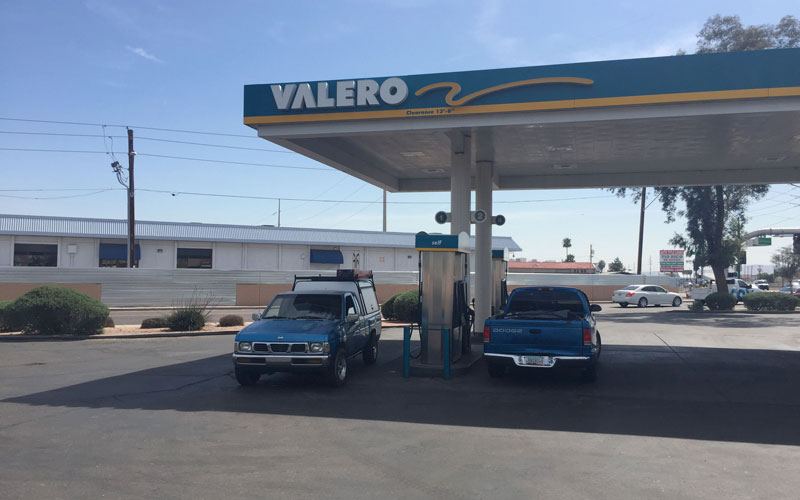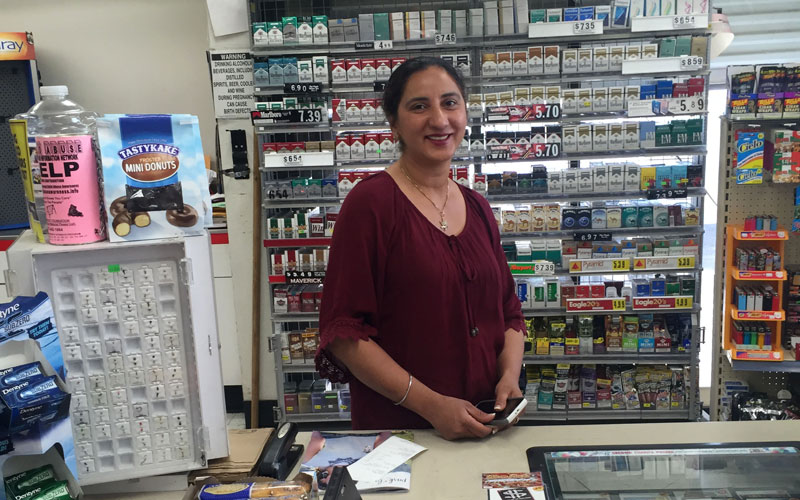
Lupe Castro fills her gas tank for $1.59 a gallon. Arizona has the second lowest average gas price in the country. (Mallory Price/Cronkite News)

Arizona has the second lowest gas prices in the nation with an average price of $1.64 per gallon. (Mallory Price/Cronkite News)

Mandeep Sodhi said that customers are attracted to an “aggressive price” instead of a brand name when they fill up their tank. (Mallory Price/Cronkite News)
Eladio Castellanos fills the gas tank of a black Dodge Charge outside of a Circle K gas station for $1.59 per gallon. A few minutes later, the price to fill up his tank makes him happy.
It cost him less than $21.
Drivers across Arizona are experiencing a similar thrill. Arizona had the third-lowest gas prices in the nation early this week with an average price of $1.71 per gallon, according to AAA Arizona, an automobile association.
The lowest prices are in Tucson, at about $1.53 per gallon, compared to Flagstaff’s high of $1.93.
It may not last long. Gas prices in Arizona and elsewhere in the country are creeping upward, according to Michelle Donati, spokeswoman for AAA Arizona.
Valero station owner Mandeep Sodhi said that low prices attract more customers to her six Valley gas stations. And low prices also mean customers are also buying items at the convenient store, she said.
“It’s good for the business, it’s good for the customers, it’s good for everybody,” Sodhi said.
Sodhi said that customers are attracted to an “aggressive price” instead of a brand name when they fill up their tank. The low gas prices benefit all gas stations, from those operated by large corporations to small, independently owned businesses, she said.
See related story:
Phoenix water rates among lowest in nation, despite recent rate hike
“Whenever we have the low prices, they come here. They don’t care that there is a [QuickTrip] across the street. They always want to come here if we have the lowest prices,” said Sodhi who has owned gas stations with her husband for more than 16 years.
Sodhi has more control over the purchasing and pricing of the products that she sells in the convenient store than most corporate gas stations, she said. This helps her make a profit from convenience store sales even when she has to sell gas at prices less than her purchase price, she said.
Neal Jackson, a manager at Fast Gas in Tempe, said that it is easier to compete with corporate gas stations when the price of gas is lower.
The low gas prices are caused by increased production due to record supplies of both crude and fuel oil, said Donati. However, refineries are switching to the summer formula, which is causing a slight increase in cost, she said.